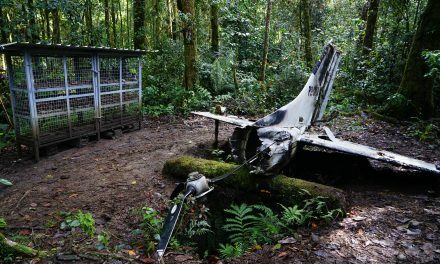The Rise, Fall and Future of Kokoda Tourism
The Kokoda Trail
‘At the foot of the Owen Stanleys in Papua New Guinea you can look into the ancient landscape – majestic peaceful wilderness, nature in its full glory. There have been tracks across the mountains for thousands of years; the people who inhabit the region were gardening at the same time agriculture was developing in Ancient Egypt. The strength of natural and cultural heritage are beyond simple words; fascinating, awesome, daunting – world class.
‘Yet the battles of 1942 and the contemporary interest in ‘Kokoda ‘ are what have made it Papua New Guinea’s No. I tourist attraction. In 1942 it was Australians and Papua New Guineans fighting Japanese for what was then Australian land. Young men in a bloody struggle for ‘their land’. The battle has become folklore in Australia – a place of pilgrimage like Gallipoli, Villers-Bretonneux, Sandakan, Passchendale.
‘As a developing nation Papua New Guinea has numerous problems; governance, health, education and law the ‘major issues’. As the custodians it is not surprising that protection of heritage for PNG comes low down the priority list.
‘Few would argue that the Heritage of Kokoda shouldn’t be protected, but clearly it is beyond the means of Papua New Guinea. The question of who is the custodian is relevant. The Australian/PNG Governments’ Joint Understanding Kokoda Initiative (2008) held promise of heritage protection however, implementation and funding would appear to have focused on environment, health, safety and education. A decade on it seems that again heritage has been relegated.’
Michael Pender
HPA Projects
The most relevant guide to the potential of a wartime tourism industry in PNG is the continued growth in Australians making the pilgrimage to Gallipoli.
Each year up to 9,000 Australians visit the Dawn Service at Anzac Cove. Thousands more visit it at other times of the year. It is now becoming a pilgrimage for more than a million Turkish people also visiting Gallipoli each year.
Papua New Guinea is the principal custodian of sites sacred to the wartime heritage of Australia, America and Japan. It therefore has the potential to be a world class wartime tourism destination for pilgrims from each of these countries. The emergence of Kokoda as PNGs most popular tourism destination since the 50th anniversary of the Kokoda campaign in 1992 is a key indicator of this potential.
‘Kokoda’ is almost the complete adventure experience for Australian baby-boomers and young adventurers. It requires physical stamina and mental tenacity. The wartime history evokes strong emotions. The unconditional care and support of local PNG guides and villagers is humbling. The environment is rugged, remote and pristine.
Many trekkers have invited their PNG guides to Australia to meet families and friends after they return. Many more are willing to contribute to agricultural, health and education initiatives to assist local villages as demonstrated in the attached report.
Beyond Kokoda are wartime adventures in Rabaul, Milne Bay, Buna, Gona, Salamaua, Nadzab, Lae, Finchafen, the Finisterre Ranges, Death Valley, Shaggy Ridge, Madang and Wewak. These are not only different battlesites – they are inhabited by different cultures with different traditions that create an adventurous smorgasbord. The 75th anniversary period from 2017 – 2020 will lead to increased numbers of Australians visiting these locations if PNG Tourism develops a wartime tourism strategy to develop and market these significant locations.
Wartime tourism is not restricted to trekkers. It has the capacity for wartime cruises to Port Moresby, Milne Bay, Lae, Madang, Wewak, Aitape, Manus, Rabaul, Bougainville and the Solomon’s. Imagine an Anzac Dawn Service at Owers Corner; a showcase of PNG culture along Ela Beach; a ‘Beating-of-the-Retreat’ at Bomana War Cemetery followed by a 7-day Pacific War Cruise to each of the significant coastal/island battlesites.
The most important challenge for PNG is to develop a sustainable model that can be applied to each area. The development of the Kokoda trekking industry provides a timely opportunity for a case study as the basis for developing such a model for wartime tourism.





